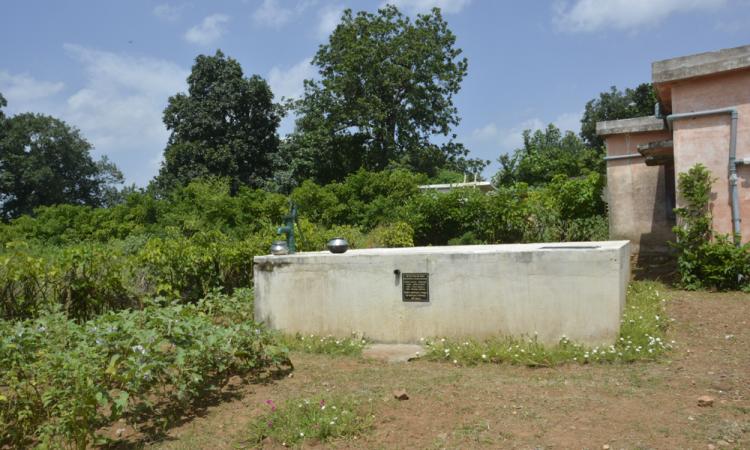
Chhattisgarh ranked number 1 in the country for providing domestic water connections in 2014-15 under the National Rural Drinking Water Programme (NRDWP). Despite this, the government has failed to provide safe and clean drinking water to many who are still affected by fluoride, arsenic and iron contamination. 17 out of 27 districts, which includes 592 villages, show fluorosis as one of the major public health problems. 1700 government schools in Chhattisgarh don't even have basic water facilities in the villages, which is ironic given that "Chhattisgarh receives an average rainfall of 1200 mm, but does not harvest even 10 percent of the rooftop water for drinking purposes", says Paras Yadav, a trained hydrologist working with Samerth, an NGO working on water and other social issues in the state.
Rooftop rainwater harvesting is the technique through which rainwater is captured from the roof and stored for use later. Harvested rainwater can be stored in sub-surface groundwater reservoirs or in storage tanks.
Advantages of using rooftop rainwater harvesting
- Provides self-sufficiency to water supply.
- Reduces the cost of pumping groundwater.
- Provides high-quality water that is soft and low in minerals.
- Improves the quality of groundwater through dilution when recharged to the ground.
- Reduces soil erosion in urban and rural areas.
- Is a cost-effective and simple technique.
- RWH structures easy to construct, operate and maintain.
- In saline or coastal areas rainwater provides good quality water, and when recharged to the ground, it reduces salinity and also helps in maintaining the balance between the fresh-saline water interface.
- In Islands, due to the limited extent of freshwater aquifers, rainwater harvesting is the most preferred source of water for domestic use.
- It had a flat roof that could capture maximum rainwater.
- The number of school going children at Madiya Kachar was higher than those at nearby schools.
- Iron contamination was highest in the village.
- The dropout rate of school going children was rising rapidly due to the non-availability of drinking water within the school premises.
- The drinking water source was 1km away from the school building.